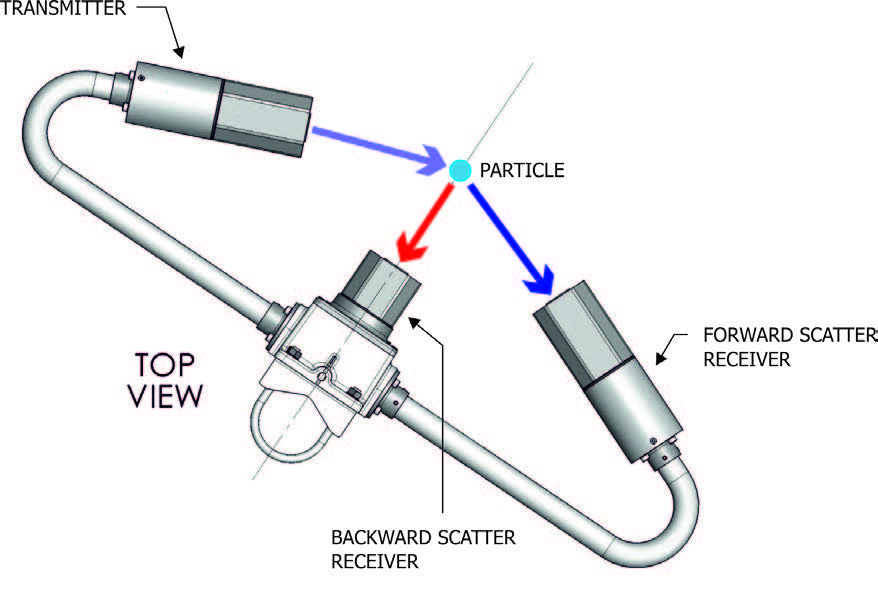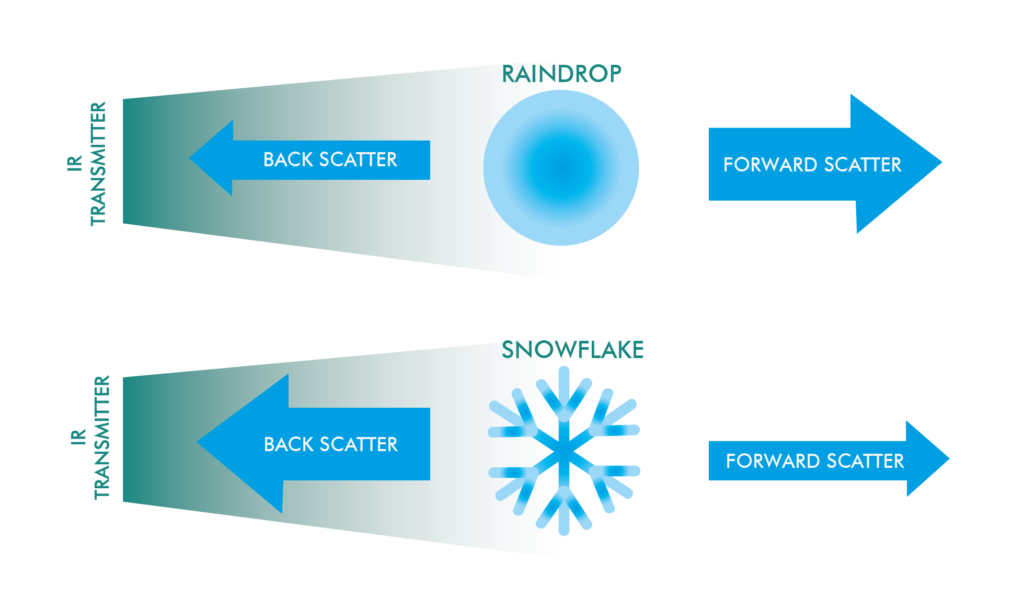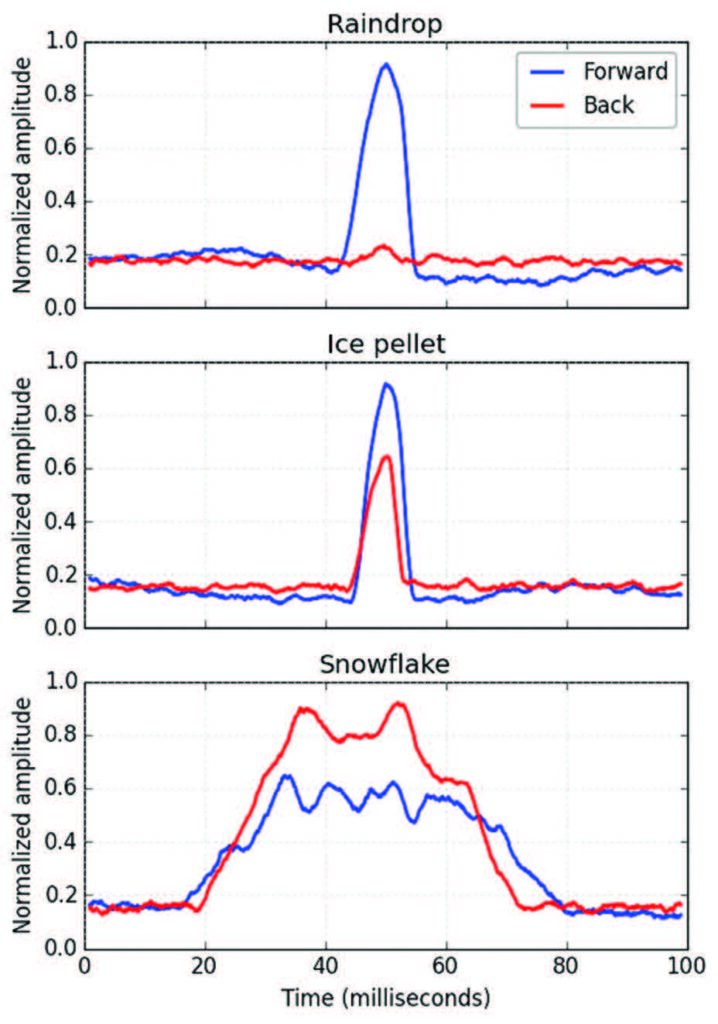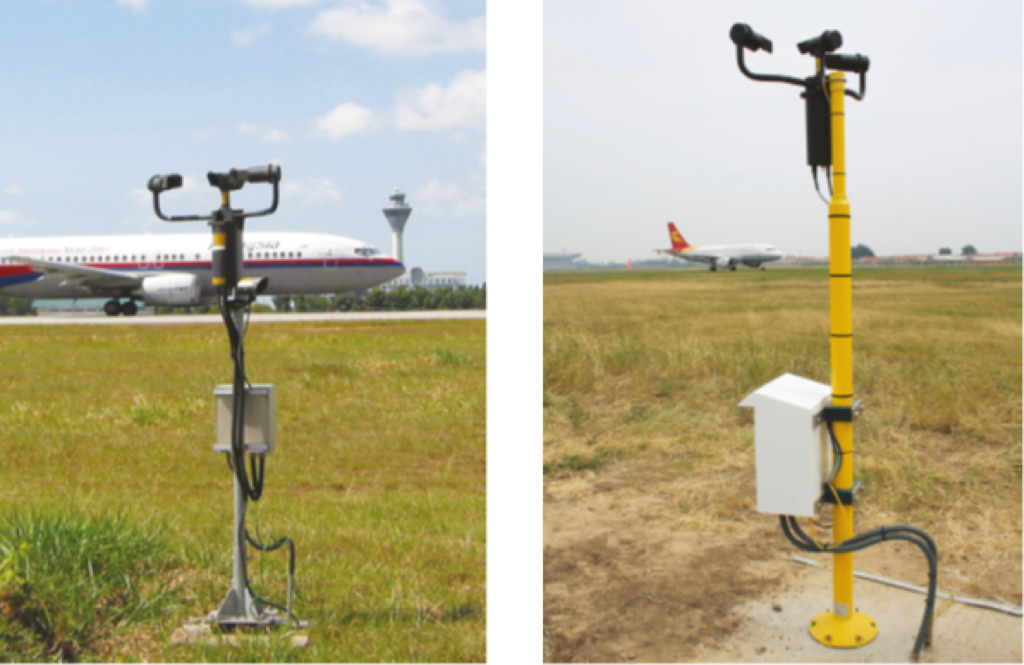Two heads are better than one – the advantages of the Biral back scatter head for precipitation classification.
Automatic visibility and present weather sensors normally use the forward scattering of infrared light to estimate visibility and classify precipitation. Sensors produced by Biral emit a cone of modulated near infrared (850 nm) from the transmitter head, which is scattered by particles in the air. The intensity of scattering is not the same in all directions, since this is strongly dependent on the shape, size and composition of the particle.
How it Works
Infrared light emitted by the transmitter that is scattered by 39-51° is detected by the forward scatter receiver. This is sufficient to estimate the visibility and aid the classification of precipitation type. The infrared light which is scattered by 107- 119° is detected by Biral’s unique back scatter receiver, which is used in addition to the forward scatter measurement to help discriminate between different types of precipitation, such as rain and snow.
A diagram of the scattering angles in relation to a Biral visibility and present weather sensor is shown in Figure 1.

Present weather sensors which do not have a back scatter receiver usually discriminate between rain and snow using only the forward scatter signal from an individual hydrometeor (raindrop or snowflake), often combined with air temperature.
Biral’s back scatter receiver provides more detailed independent data on the precipitation type compared with using forward scatter alone. Specifically, the sensor measures the ratio between the back and the forward scattered infrared. Snow has a much higher proportion of back scattered infrared compared to rain (figure 2), so the back scatter head is able to reliably differentiate between rain and snow.

The crystalline structure of a snowflake provides multiple facets for scattering of optical and infrared light in all directions irrespective of wavelength, especially back towards the transmitter. This accounts for the main reason a human observer can differentiate between rain and snow – because snowflakes are white! The same applies to other frozen hydrometeors such as ice pellets and hail, where back scatter from trapped air bubbles make the particle appear opaque, with increased backscatter.
An example of the relative difference between forward and back scattered infrared for different individual hydrometeors is presented in figure 3. These measurements were taken as rain turned to ice pellets then snow as a thunderstorm passed over a Bristol-based sensor on 2 March 2016. Classifications were based on human observation, with approximately three minutes between the different hydrometeor types. Air temperature remained above freezing throughout, at 6°C during the rainfall and ice pellets, and 5°C during the snowfall.

The back scatter receiver is unique to the Biral present weather sensors and provides reliable discrimination between rain and snow. This is demonstrated by reports of excellent snow detection and discrimination capability from our customers and field trials with trained meteorological observers.
Back scatter receivers form part of our SWS 200 and 250 series and VPF 730 and 750 series. The Biral VPF-750 represents our most advanced visibility and present weather sensor, with the addition of external temperature and relative humidity sensors to aid discrimination between fog and non-liquid particles which lower the visibility, such as smoke, wind-blown sand, and dust. An integrated freezing rain detector allows reporting of all forms of freezing precipitation, providing a comprehensive and reliable account of present weather for all environments.

Author: Alec Bennett PhD MInstP FRMetS CMet.